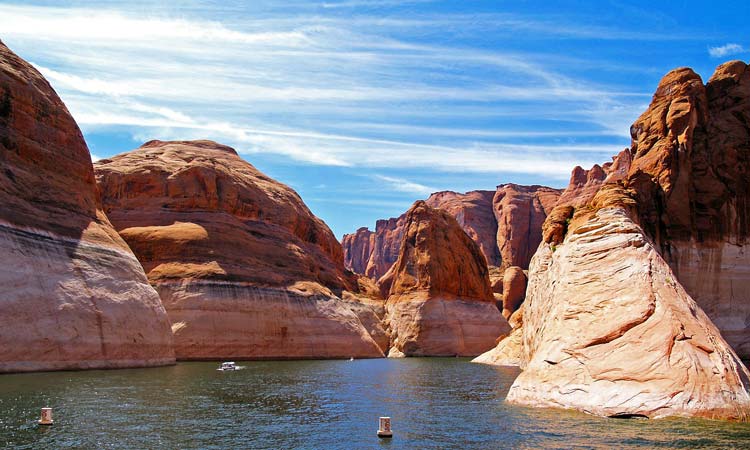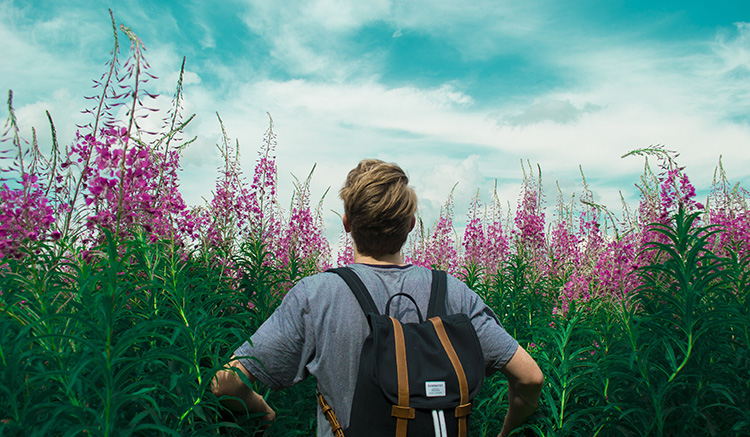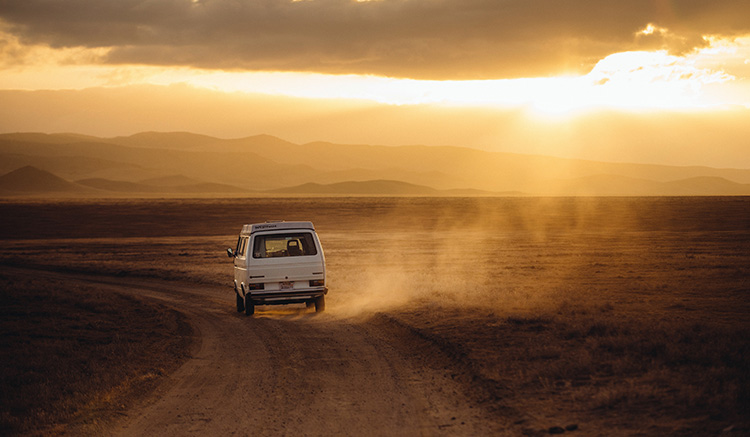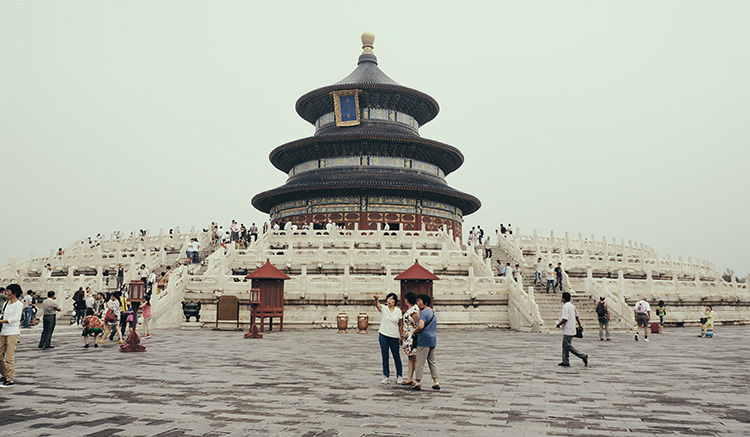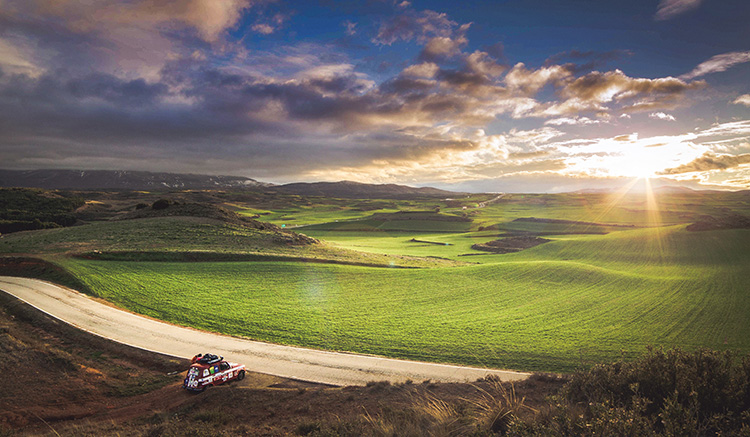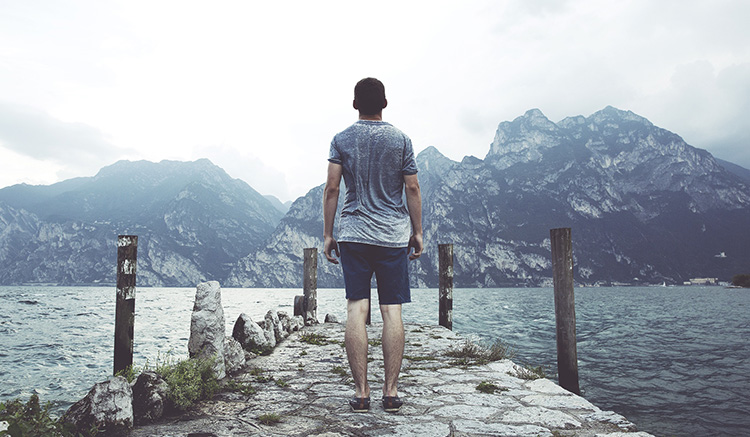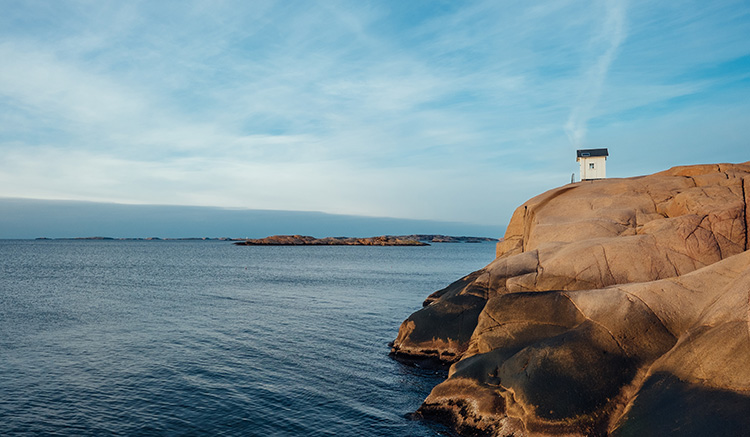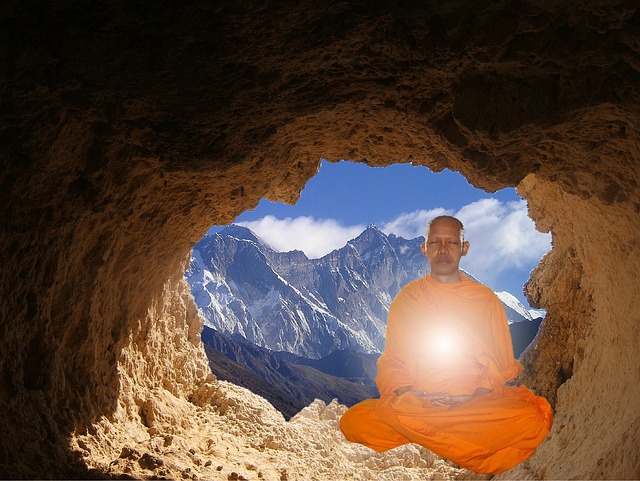I am a blogger and a photographer who loves to travel around the world. I love sharing my experiences through my blog. I am always ready to embrace new and unique experiences. I enjoy cooking and have tried cooking many cuisines from all around the world.

Day: May 2, 2016
Unexpected Encounter
Posted onKayaking is the use of a kayak for moving across water. It is distinguished from canoeing by the sitting position of the paddler and the number of blades on the paddle. A kayak is a low-to-the-water, canoe-like boat in which the paddler sits facing forward, legs in front, using a double-bladed paddle to pull front-to-back on one side and then the other in rotation. Most kayaks have closed decks, although sit-on-top and inflatable kayaks are growing in popularity as well.
Kayaks can also be classified by their design and the materials from which they are made. Each design has its specific advantage, including performance, manoeuvrability, stability and paddling style. Kayaks can be made of metal, fibreglass, wood, plastic, fabrics, and inflatable fabrics such as PVC or rubber, and more recently expensive but feather light carbon fiber.
As a child, we visited the San Juan Islands during the summer. Kayaking, big family meals, playing on the beach – great memories!
Zoe McLellan
Inflatable kayaks, made from lightweight fabric, can be deflated and easily transported and stored, and considered to be remarkably tough and durable compared to some hard-sided boats. There are many types of kayaks used in flat water and white water kayaking. The sizes and shapes vary drastically depending on what type of water to be paddled on and also what the paddler would like to do.

The second set of essentials for kayaking is an off-set paddle where the paddle blades are tilted to help reduce wind resistance while the other blade is being used in the water. These vary in length and also shape depending on the intended use, height of the paddler and often, the paddler’s preference. Kayaks should be equipped with one or more buoyancy aid which creates air space that helps prevent a kayak from sinking when filled with water; life jacket should be worn at all times, a helmet is also often required for most kayaking and is mandatory for white water kayaking.
Various other pieces of safety gear include: a whistle for signaling for help; throwing ropes to help rescue other kayakers; and, a diving knife and appropriate water shoes should used depending upon the risks the water and terrain pose. Proper clothing such as a dry suit, wet suit or spray top also help protect kayakers from cold water or air temperatures.
Nature and Kayaking
Posted onKayaking is the use of a kayak for moving across water. It is distinguished from canoeing by the sitting position of the paddler and the number of blades on the paddle. A kayak is a low-to-the-water, canoe-like boat in which the paddler sits facing forward, legs in front, using a double-bladed paddle to pull front-to-back on one side and then the other in rotation. Most kayaks have closed decks, although sit-on-top and inflatable kayaks are growing in popularity as well.
Kayaks can also be classified by their design and the materials from which they are made. Each design has its specific advantage, including performance, manoeuvrability, stability and paddling style. Kayaks can be made of metal, fibreglass, wood, plastic, fabrics, and inflatable fabrics such as PVC or rubber, and more recently expensive but feather light carbon fiber.
As a child, we visited the San Juan Islands during the summer. Kayaking, big family meals, playing on the beach – great memories!
Zoe McLellan
Inflatable kayaks, made from lightweight fabric, can be deflated and easily transported and stored, and considered to be remarkably tough and durable compared to some hard-sided boats. There are many types of kayaks used in flat water and white water kayaking. The sizes and shapes vary drastically depending on what type of water to be paddled on and also what the paddler would like to do.

The second set of essentials for kayaking is an off-set paddle where the paddle blades are tilted to help reduce wind resistance while the other blade is being used in the water. These vary in length and also shape depending on the intended use, height of the paddler and often, the paddler’s preference. Kayaks should be equipped with one or more buoyancy aid which creates air space that helps prevent a kayak from sinking when filled with water; life jacket should be worn at all times, a helmet is also often required for most kayaking and is mandatory for white water kayaking.
Various other pieces of safety gear include: a whistle for signaling for help; throwing ropes to help rescue other kayakers; and, a diving knife and appropriate water shoes should used depending upon the risks the water and terrain pose. Proper clothing such as a dry suit, wet suit or spray top also help protect kayakers from cold water or air temperatures.
Travelling in Arizona
Posted onArizona is a state in the southwestern region of the United States. It is also part of the Western United States and of the Mountain West states. It is the sixth largest and the 14th most populous of the 50 states. Its capital and largest city is Phoenix. Arizona is one of the Four Corners states. It has borders with New Mexico, Utah, Nevada, California, and Mexico, and one point in common with the southwestern corner of Colorado. Arizona’s border with Mexico is 389 miles long, on the northern border of the Mexican states of Sonora and Baja California.
There are ski resorts in the areas of Flagstaff, Alpine, and Tucson. In addition to the Grand Canyon National Park, there are several national forests, national parks, and national monuments. About one-quarter of the state is made up of Indian reservations that serve as the home of a number of Native American tribes.
Baseball, it is said, is only a game. True. And the Grand Canyon is only a hole in Arizona. Not all holes, or games, are created equal.
George Will
The name of the state appears to originate from an earlier Spanish name, Arizonac, derived from the O’odham name alĭ ṣonak, meaning “small spring”, which initially applied only to an area near the Mexican silver mining camp of Planchas de Plata, Sonora.

There is a misconception that the state’s name originated from the Spanish term for “Arid Zone”. The Spanish phrase for “arid zone” would be zona árida in Spanish.
Arizona is located in the Southwestern United States as one of the Four Corners states. Arizona is the sixth largest state by area, after New Mexico and before Nevada. Of the state’s 113,998 square miles (295,000 km2), approximately 15% is privately owned. The remaining area is public forest and park land, state trust land and Native American reservations.
Arizona is well known for its desert Basin and Range region in the southern portions of the state, which is rich in a landscape of xerophyte plants such as the cactus and its climate with exceptionally hot summers and mild winters. The state is less well known for its pine-covered north-central portion of the state’s high country of the Colorado Plateau .
Like other states of the Southwest United States, Arizona has an abundance of mountains and plateaus in addition to its desert climate. Despite the state’s aridity, 27% of Arizona is forest, a percentage comparable to modern-day France or Germany. The largest stand of ponderosa pine trees in the world is contained in Arizona.
Breakfast around the world
Posted onBreakfast is the first meal of a day, most often eaten in the early morning before undertaking the day’s work. Some believe it to be the most important meal of the day. Among English speakers, “breakfast” can be used to refer to this meal or to refer to a meal composed of traditional breakfast foods (such as eggs, porridge and sausage) served at any time of day. The word literally refers to breaking the fasting period of the prior night.
Breakfast foods vary widely from place to place, but often include a carbohydrate such as grains or cereals, fruit, vegetables, a protein food such as eggs, meat or fish, and a beverage such as tea, coffee, milk, or fruit juice. Coffee, milk, tea, juice, breakfast cereals, pancakes, waffles, sausages, French toast, bacon, sweetened breads, fresh fruit, vegetables, eggs, baked beans, muffins, crumpets and toast with butter, margarine, jam or marmalade are common examples of Western breakfast foods, though a large range of preparations and ingredients are associated with breakfast globally.
Breakfast is commonly referred to as “the most important meal of the day.” Indeed, current research has shown that people who skip breakfast are disproportionately likely to have problems with metabolism, weight, and cardiac health.
In Burma the traditional breakfast is htamin jaw, fried rice with boiled peas (pè byouk), and yei nway jan (green tea), especially among the poor.
Glutinous rice or kao hnyin is steamed and wrapped in banana leaf often served with peas as kao hnyin baung with a sprinkle of crushed and salted toasted sesame. Equally popular is the purple variety of rice known as nga cheik which is cooked the same way and called nga cheik paung. Si damin is sticky rice cooked with turmeric and onions in peanut oil which is served with crushed and salted toasted sesame and crisp fried onions. Assorted fritters such as baya jaw (urad dal) are often served as a complement.
Nan bya or naan (Indian-style flatbreads) again with pè byouk or simply buttered, is served with Indian tea or coffee. It goes well with hseiksoup (mutton soup).
Fried chapati, blistered like nan bya but crispy, with pè byouk and crispy fried onions is a popular alternative.
Htat ta ya, lit. “a hundred layers”, is flaky multi-layered fried paratha served with either pè byouk or a sprinkle of sugar.
Eeja gway (Chinese-style fried breadsticks or youtiao) with Indian tea or coffee is another favourite.
Discovering the World
Posted onVenice (English /ˈvɛnɪs/ ven-iss; [veˈnetsja] ( listen)) is a city in northeastern Italy sited on a group of 117 small islands separated by canals and linked by bridges. It is located in the marshy Venetian Lagoon which stretches along the shoreline, between the mouths of the Po and the Piave Rivers. Parts of Venice are renowned for the beauty of their settings, their architecture, and artwork. A part of the city is listed as a World Heritage Site, along with its lagoon.
Venice is the capital of the Veneto region. In 2009, there were 270,098 people residing in Venice’s comune (the population estimate of 272,000 inhabitants includes the population of the whole Comune of Venezia; of whom around 60,000 live in the historic city of Venice (Centro storico); 176,000 in Terraferma (the mainland), mostly in the large frazioni (roughly equivalent to “parishes” or “wards” in other countries) of Mestre and Marghera; and 31,000 on other islands in the lagoon). Together with Padua and Treviso, the city is included in the Padua-Treviso-Venice Metropolitan Area (PATREVE), with a total population of 2,600,000. PATREVE is only a statistical metropolitan area without any degree of autonomy.
The name is derived from the ancient Veneti people who inhabited the region by the 10th century BC. The city was historically the capital of the Republic of Venice. Venice has been known as the “La Dominante”, “Serenissima”, “Queen of the Adriatic”, “City of Water”, “City of Masks”, “City of Bridges”, “The Floating City”, and “City of Canals”.
venice

The Republic of Venice was a major maritime power during the Middle Ages and Renaissance, and a staging area for the Crusades and the Battle of Lepanto, as well as a very important center of commerce (especially silk, grain, and spice) and art in the 13th century up to the end of the 17th century. This made Venice a wealthy city throughout most of its history. It is also known for its several important artistic movements, especially the Renaissance period. After the Napoleonic Wars and the Congress of Vienna, the Republic was annexed by the Austrian Empire, until it became part of the Kingdom of Italy in 1866, following a referendum held as a result of the Third Italian War of Independence. Venice has played an important role in the history of symphonic and operatic music, and it is the birthplace of Antonio Vivaldi.
The name of the city, deriving from Latin forms Venetia and Venetiae, is most likely taken from “Venetia et Histria”, the Roman name of Regio X of Roman Italy, but applied to the coastal part of the region that remained under Roman Empire outside of Gothic, Lombard, and Frankish control. The name Venetia, however, derives from the Roman name for the people known as the Veneti, and called by the Greeks Eneti (Ἐνετοί). The meaning of the word is uncertain, although there are other Indo-European tribes with similar-sounding names, such as the Celtic Veneti, Baltic Veneti, and the Slavic Wends. Linguists suggest that the name is based on an Indo-European root *wen (“love”), so that *wenetoi would mean “beloved”, “lovable”, or “friendly”. A connection with the Latin word venetus, meaning the color ‘sea-blue’, is also possible. Supposed connections of Venetia with the Latin verb venire (to come), such as Marin Sanudo’s veni etiam (“Yet, I have come!”), the supposed cry of the first refugees to the Venetian lagoon from the mainland, or even with venia (“forgiveness”) are fanciful. The alternative obsolete form is Vinegia [viˈnɛːdʒa]; (Venetian: Venèxia [veˈnɛzja]; Latin: Venetiae; Slovene: Benetke)
Although no surviving historical records deal directly with the founding of Venice, tradition and the available evidence have led several historians to agree that the original population of Venice consisted of refugees from Roman cities near Venice such as Padua, Aquileia, Treviso, Altino and Concordia (modern Portogruaro) and from the undefended countryside, who were fleeing successive waves of Germanic and Hun invasions. Some late Roman sources reveal the existence of fishermen on the islands in the original marshy lagoons. They were referred to as incolae lacunae (“lagoon dwellers”). The traditional founding is identified with the dedication of the first church, that of San Giacomo on the islet of Rialto (Rivoalto, “High Shore”) — said to have taken place at the stroke of noon on 25 March 421 (the Feast of the Annunciation).
Beginning as early as AD 166 to 168, the Quadi and Marcomanni destroyed the main center in the area, the current Oderzo. The Roman defences were again overthrown in the early 5th century by the Visigoths and, some 50 years later, by the Huns led by Attila. The last and most enduring immigration into the north of the Italian peninsula, that of the Lombards in 568, left the Eastern Roman Empire a small strip of coast in the current Veneto, including Venice. The Roman/Byzantine territory was organized as the Exarchate of Ravenna, administered from that ancient port and overseen by a viceroy (the Exarch) appointed by the Emperor in Constantinople, but Ravenna and Venice were connected only by sea routes; and with the Venetians’ isolated position came increasing autonomy. New ports were built, including those at Malamocco and Torcello in the Venetian lagoon. The tribuni maiores, the earliest central standing governing committee of the islands in the Lagoon, dated from c. 568.
Mountain and Lakes
Posted onAlthough the Sun appears to “rise” from the horizon, it is actually the Earth’s motion that causes the Sun to appear. The illusion of a moving Sun results from Earth observers being in a rotating reference frame; this apparent motion is so convincing that most cultures had mythologies and religions built around the geocentric model, which prevailed until astronomer Nicolaus Copernicus first formulated the heliocentric model in the 16th century.
Twilight, the period in the morning during which the sky is light but the Sun is not yet visible. The beginning of morning twilight is called dawn.
The period after the Sun rises during which striking colors and atmospheric effects are still seen.
“The purpose of life is to live it, to taste experience to the utmost, to reach out eagerly and without fear for newer and richer experience.”
― Eleanor Roosevelt
In late winter and spring, sunrise as seen from temperate latitudes occurs earlier each day, reaching its earliest time near the summer solstice; although the exact date varies by latitude.

After this point, the time of sunrise gets later each day, reaching its latest sometime around the winter solstice. The offset between the dates of the solstice and the earliest or latest sunrise time is caused by the eccentricity of Earth’s orbit and the tilt of its axis, and is described by the analemma, which can be used to predict the dates. Variations in atmospheric refraction can alter the time of sunrise by changing its apparent position. Near the poles, the time-of-day variation is exaggerated, since the Sun crosses the horizon at a very shallow angle and thus rises more slowly.
In late winter and spring, sunrise as seen from temperate latitudes occurs earlier each day, reaching its earliest time near the summer solstice; although the exact date varies by latitude.
The Ultimate Travel Guide
Posted onTravel is the movement of people between relatively distant geographical locations, and can involve travel by foot, bicycle, automobile, train, boat, airplane, or other means, with or without luggage, and can be one way or round trip. Travel can also include relatively short stays between successive movements.
The origin of the word “travel” is most likely lost to history. The term “travel” may originate from the Old French word travail. According to the Merriam Webster dictionary, the first known use of the word travel was in the 14th century. It also states that the word comes from Middle English travailen, travelen (which means to torment, labor, strive, journey) and earlier from Old French travailler (which means to work strenuously, toil).
In English we still occasionally use the words travail and travails, which mean struggle. According to Simon Winchester in his book The Best Travelers’ Tales (2004), the words travel and travail both share an even more ancient root: a Roman instrument of torture called the tripalium (in Latin it means “three stakes”, as in to impale). This link reflects the extreme difficulty of travel in ancient times. Also note the torturous connotation of the word “travailler.”
Today, travel may or may not be much easier depending upon the destination you choose (i.e., Mt. Everest, the Amazon rainforest), how you plan to get there (tour bus, cruise ship, or oxcart), and whether or not you decide to “rough it (see extreme tourism and adventure travel). “There’s a big difference between simply being a tourist and being a true world traveler,” notes travel writer Michael Kasum.
“For my part, I travel not to go anywhere, but to go. I travel for travel’s sake. The great affair is to move.” – Robert Louis Stevenson
Motives to travel include pleasure, relaxation, discovery and exploration, getting to know other cultures and taking personal time for building interpersonal relationships. Travel may be local, regional, national (domestic) or international. In some countries, non-local internal travel may require an internal passport, while international travel typically requires a passport and visa. A trip may also be part of a round-trip, which is a particular type of travel whereby a person moves from one location to another and returns. 
Authorities emphasize the importance of taking precautions to ensure travel safety. When traveling abroad, the odds favor a safe and incident-free trip, however, travelers can be subject to difficulties, crime and violence. Some safety considerations include being aware of one’s surroundings, avoiding being the target of a crime, leaving copies of one’s passport and itinerary information with trusted people, obtaining medical insurance valid in the country being visited and registering with one’s national embassy when arriving in a foreign country.
Many countries do not recognize drivers’ licenses from other countries; however most countries accept international driving permits. Automobile insurance policies issued in one’s own country are often invalid in foreign countries, and it’s often a requirement to obtain temporary auto insurance valid in the country being visited. It is also advisable to become oriented with the driving-rules and -regulations of destination countries. Wearing a seat belt is highly advisable for safety reasons; many countries have penalties for violating seatbelt laws.
Best way to enjoy Ohio
Posted onOhio Listeni/oʊˈhaɪ.oʊ/ is a state in the midwestern region of the United States. Ohio is the 34th largest by area, the 7th most populous, and the 10th most densely populated of the 50 United States. The state’s capital and largest city is Columbus.
The state takes its name from the Ohio River. The name originated from the Iroquois word ohi-yo’, meaning “great river” or “large creek.” Partitioned from the Northwest Territory, the state was admitted to the Union as the 17th state (and the first under the Northwest Ordinance) on March 1, 1803. Ohio is historically known as the “Buckeye State” after its Ohio buckeye trees, and Ohioans are also known as “Buckeyes.”
The government of Ohio is composed of the executive branch, led by the Governor; the legislative branch, which comprises the Ohio General Assembly; and the judicial branch, which is led by the state Supreme Court. Ohio occupies 16 seats in the United States House of Representatives. Ohio is known for its status as both a swing state and a bellwether in national elections. Six Presidents of the United States have been elected who had Ohio as their home state.
Ohio’s geographic location has proven to be an asset for economic growth and expansion. Because Ohio links the Northeast to the Midwest, much cargo and business traffic passes through its borders along its well-developed highways. Ohio has the nation’s 10th largest highway network, and is within a one-day drive of 50% of North America’s population and 70% of North America’s manufacturing capacity. To the north, Lake Erie gives Ohio 312 miles (502 km) of coastline, which allows for numerous cargo ports. Ohio’s southern border is defined by the Ohio River (with the border being at the 1793 low-water mark on the north side of the river), and much of the northern border is defined by Lake Erie. Ohio’s neighbors are Pennsylvania to the east, Michigan to the northwest, Ontario Canada, to the north, Indiana to the west, Kentucky on the south, and West Virginia on the southeast. Ohio’s borders were defined by metes and bounds in the Enabling Act of 1802 as follows:
You have to remember that in the microcosm of Cincinnati, Ohio, through northern Kentucky, my father was a big star, still is. So that made my sister and me really visible. Everybody knew us, talked about us.
George Clooney
Bounded on the east by the Pennsylvania line, on the south by the Ohio River, to the mouth of the Great Miami River, on the west by the line drawn due north from the mouth of the Great Miami aforesaid, and on the north by an east and west line drawn through the southerly extreme of Lake Michigan, running east after intersecting the due north line aforesaid, from the mouth of the Great Miami until it shall intersect Lake Erie or the territorial line, and thence with the same through Lake Erie to the Pennsylvania line aforesaid.
The Ohio coast of Lake Erie.
Ohio is bounded by the Ohio River, but nearly all of the river itself belongs to Kentucky and West Virginia. In 1980, the U.S. Supreme Court held that, based on the wording of the cessation of territory by Virginia (which at that time included what is now Kentucky and West Virginia), the boundary between Ohio and Kentucky (and, by implication, West Virginia) is the northern low-water mark of the river as it existed in 1792. Ohio has only that portion of the river between the river’s 1792 low-water mark and the present high- water mark.
water mark.
The border with Michigan has also changed, as a result of the Toledo War, to angle slightly northeast to the north shore of the mouth of the Maumee River.
Much of Ohio features glaciated plains, with an exceptionally flat area in the northwest being known as the Great Black Swamp. This glaciated region in the northwest and central state is bordered to the east and southeast first by a belt known as the glaciated Allegheny Plateau, and then by another belt known as the unglaciated Allegheny Plateau. Most of Ohio is of low relief, but the unglaciated Allegheny Plateau features rugged hills and forests.
Travelling in Australia
Posted onAustralia (/ɒˈstreɪliə/, /ə-/, colloquially /-jə/), officially known as the Commonwealth of Australia, is a country comprising the mainland of the Australian continent, the island of Tasmania, and numerous smaller islands. It is the world’s sixth-largest country by total area. Neighbouring countries include Papua New Guinea, Indonesia and East Timor to the north; the Solomon Islands and Vanuatu to the north-east; and New Zealand to the south-east.
For about 50,000 years before the first British settlement in the late 18th century,Australia was inhabited by indigenous Australians, who spoke languages grouped into roughly 250 language groups.After the European discovery of the continent by Dutch explorers in 1606, Australia’s eastern half was claimed by Great Britain in 1770 and initially settled through penal transportation to the colony of New South Wales from 26 January 1788. The population grew steadily in subsequent decades; the continent was explored and an additional five self-governing crown colonies were established. On 1 January 1901, the six colonies federated, forming the Commonwealth of Australia. Since federation, Australia has maintained a stable liberal democratic political system that functions as a federal parliamentary democracy and constitutional monarchy comprising six states and several territories. The population of 24 million is highly urbanised and heavily concentrated in the eastern states and on the coast.
Australia is a developed country and one of the wealthiest in the world, with the world’s 12th-largest economy. In 2014 Australia had the world’s fifth-highest per capita income. Australia’s military expenditure is the world’s 13th-largest. With the second-highest human development index globally, Australia ranks highly in many international comparisons of national performance, such as quality of life, health, education, economic freedom, and the protection of civil liberties and political rights. Australia is a member of the United Nations, G20, Commonwealth of Nations, ANZUS, Organisation for Economic Co-operation and Development (OECD), World Trade Organization, Asia-Pacific Economic Cooperation, and the Pacific Islands Forum.
The name Australia (pronounced in Australian English) is derived from the Latin Terra Australis (“southern land”) a name used for putative lands in the southern hemisphere since ancient times. The earliest recorded use of the word Australia in English was in 1625 in “A note of Australia del Espíritu Santo, written by Sir Richard Hakluyt”, published by Samuel Purchas in Hakluytus Posthumus, a corruption of the original Spanish name “Austrialia del Espíritu Santo” (Southern Land of the Holy Spirit) for an island in Vanuatu. The Dutch adjectival form Australische was used in a Dutch book in Batavia (Jakarta) in 1638, to refer to the newly discovered lands to the south. The first time that the name Australia appears to have been officially used was in a despatch to Lord Bathurst of 4 April 1817 in which Governor Lachlan Macquarie acknowledges the receipt of Matthew Flinders’ charts of Australia. On 12 December 1817, Macquarie recommended to the Colonial Office that it be formally adopted. In 1824, the Admiralty agreed that the continent should be known officially as Australia.
The first recorded European sighting of the Australian mainland, and the first recorded European landfall on the Australian continent, are attributed to the Dutch navigator Willem Janszoon. He sighted the coast of Cape York Peninsula in early 1606, and made landfall on 26 February at the Pennefather River near the modern town of Weipa on Cape York. The Dutch charted the whole of the western and northern coastlines and named the island continent “New Holland” during the 17th century, but made no attempt at settlement. William Dampier, an English explorer and privateer, landed on the north-west coast of New Holland in 1688 and again in 1699 on a return trip. In 1770, James Cook sailed along and mapped the east coast, which he named New South Wales and claimed for Great Britain. With the loss of its American colonies in 1783, the British Government sent a fleet of ships, the “First Fleet”, under the command of Captain Arthur Phillip, to establish a new penal colony in New South Wales. A camp was set up and the flag raised at Sydney Cove, Port Jackson, on 26 January 1788,[15] a date which became Australia’s national day, Australia Day, although the British Crown Colony of New South Wales was not formally promulgated until 7 February 1788. The first settlement led to the foundation of Sydney, and the exploration and settlement of other regions.
A calm body of water is in the foreground. The shoreline is about 200 metres away. To the left, close to the shore, are three tall gum trees; behind them on an incline are ruins, including walls and watchtowers of light-coloured stone and brick, what appear to be the foundations of walls, and grassed areas. To the right lie the outer walls of a large rectangular four-storey building dotted with regularly spaced windows. Forested land rises gently to a peak several kilometres back from the shore.
Tasmania’s Port Arthur penal settlement is one of eleven UNESCO World Heritage-listed Australian Convict Sites.
A British settlement was established in Van Diemen’s Land, now known as Tasmania, in 1803, and it became a separate colony in 1825.[40] The United Kingdom formally claimed the western part of Western Australia (the Swan River Colony) in 1828. Separate colonies were carved from parts of New South Wales: South Australia in 1836, Victoria in 1851, and Queensland in 1859. The Northern Territory was founded in 1911 when it was excised from South Australia. South Australia was founded as a “free province”—it was never a penal colony. Victoria and Western Australia were also founded “free”, but later accepted transported convicts. A campaign by the settlers of New South Wales led to the end of convict transportation to that colony; the last convict ship arrived in 1848.
The indigenous population, estimated to have been between 750,000 and 1,000,000 in 1788, declined for 150 years following settlement, mainly due to infectious disease. Thousands more died as a result of frontier conflict with settlers. A government policy of “assimilation” beginning with the Aboriginal Protection Act 1869 resulted in the removal of many Aboriginal children from their families and communities—often referred to as the Stolen Generations—a practice which may also have contributed to the decline in the indigenous population. The Federal government gained the power to make laws with respect to Aborigines following the 1967 referendum. Traditional ownership of land—aboriginal title—was not recognised until 1992, when the High Court case Mabo v Queensland (No 2) overturned the legal doctrine that Australia had been terra nullius (“land belonging to no one”) before the European occupation.
